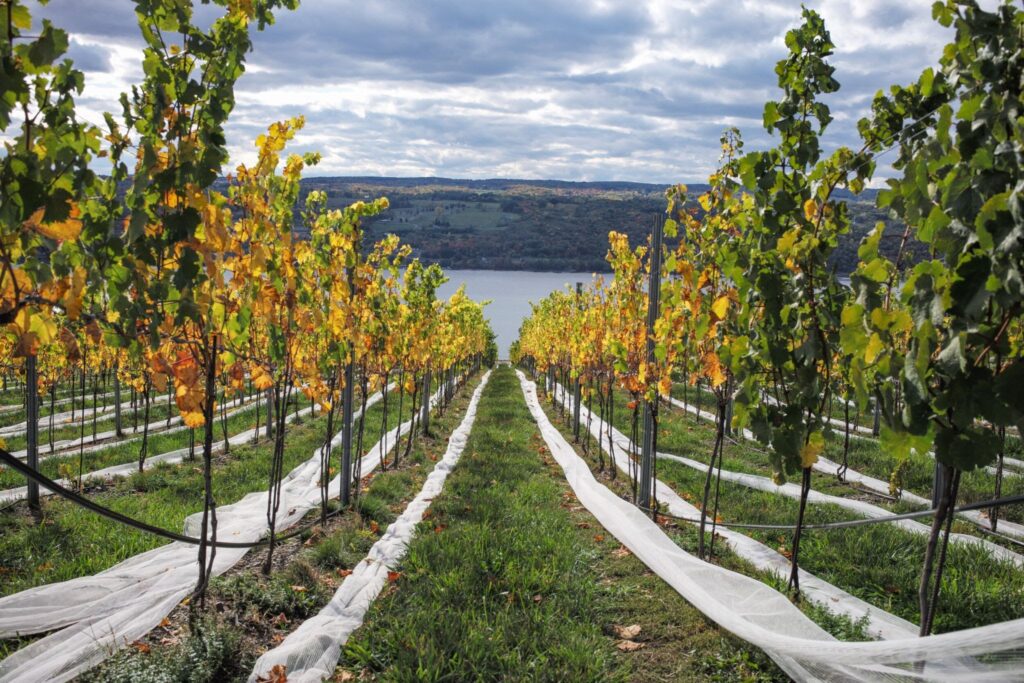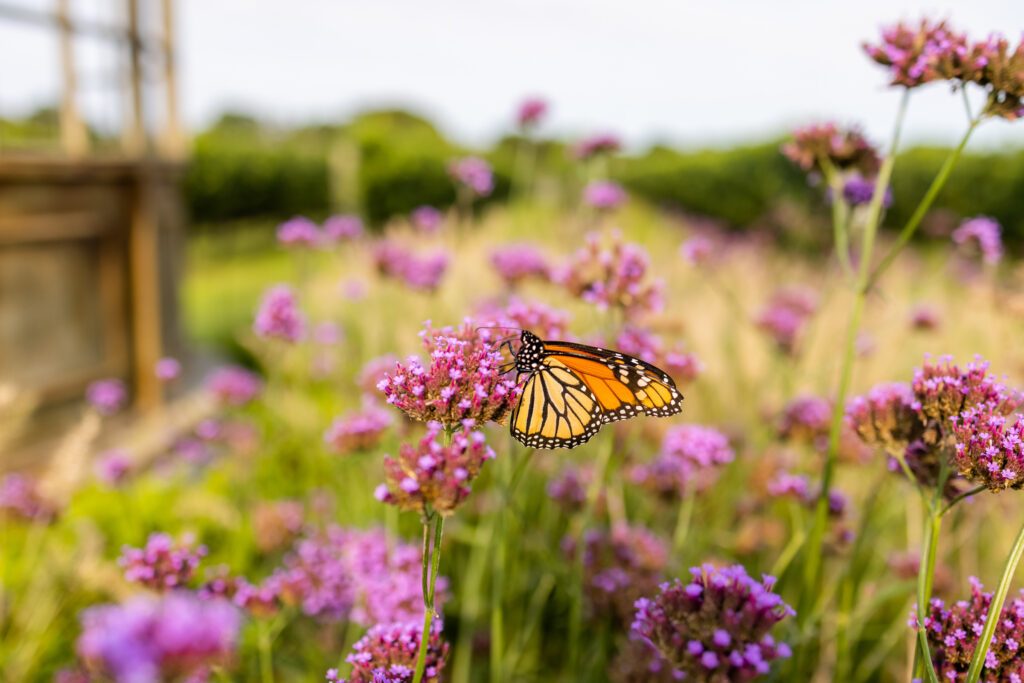Farmers are more in tune with what’s happening to the climate than anyone else because they depend on the whims of the sun, sky, and earth for their bread and butter.
Winegrowers are perhaps even more watchful of subtle shifts and changes to the climate, simply because one bad hail storm, or a difference of a few degrees in temperature during the growing season, can doom a harvest. (Too cold, and the grapes don’t reach peak ripeness; too hot, and they fall flabby and flat in the glass).
The New York Wine & Grape Foundation has announced its plans to launch a sustainability program to empower wine and grape growers who are eager to face the challenges of climate change head-on in their vineyards, production facilities, and broader communities.
The first step, sustainability program manager Whitney Beaman explains, was updating the Foundation’s original VineBalance workbook, which was created in 2007. They will build on the original workbook and include objectives encompassing ecosystem health, climate resiliency, and social equity. Growers who sign up for the Pilot Program will be on track to become certified when the program officially launches in 2023.
“The process of updating VineBalance 2022 has brought together growers and viticulturists from across the state, and I am inspired by the level of teamwork that the New York wine and grape industry has demonstrated at every step of the way,” Beaman says. “I can only imagine that the original VineBalance was the last time a group of growers banded together around the common mission of sustainability for our statewide industry, and it is through this collective effort that we are able to move the needle once again.”
But because the winegrowers of the Empire State are so deeply invested in the health of the land that nourishes their grapes, several producers already have innovative, under-the-radar farming programs in place. These programs are creating positive, often unintended ripple effects for both the quality of the wine they make and the environment. Read on for their insights.
Changing Direction
Paul Hobbs enjoys two wine harvests a year in seven different countries. Known as a “flying winemaker,” he thrives on operating multiple projects simultaneously across the globe. While that would give many winemakers whiplash, he seems to thrive on it, consistently producing some of the most critically acclaimed wines in the world.
After conquering California, Argentina, France, Armenia, and Spain, Hobbs set his eyes on the Finger Lakes with the project Hillick & Hobbs. He also imported a few novel ideas about farming here.
“I wanted to create world-class Riesling here, and I looked at Mosel as my model,” Hobbs explains, adding that one of his partners in the 26-acre estate he created on the east side of the Seneca Lake, is Johannes Selbach, owner of Selbach-Oster in Mosel. “I saw the Finger Lakes, especially the area we planted in, as having many similarities in terms of soil, steepness, and climate with the Mosel.”
While Hobbs found a lot to love in the land of the Finger Lakes, he was less enthusiastic about the convention of planting across the slopes.
“In the Mosel, the vineyards are planted up and down a slope, which improves the airflow, and keeps the canopy much healthier,” he explains. “By planting our vineyards up and down, we were naturally able to harness breezes, and it has reduced our reliance on chemical sprays. Our pest control advisor says we use less than 50% of what he typically sees in the region.”

He also created terraced dams in the vineyard to capture excess rainfall every 250 feet, which drains the water into a collection pond and prevents erosion and run-off into the nearby lake.
The vineyard, he admits, “probably cost more to create than most of my other projects combined. In the Mosel, these vineyards were built 2,000 years ago by the Romans who used slave labor.”
But he believes he made the right choice, despite the expense.
“We released our first Riesling this year, and we are very happy,” he says. “The trajectory is improving every year. And I also really like the fact that we’re using a lot less pesticide, which in turn requires fewer trips out on the tractor, which is also good for our carbon footprint and the planet.”
About 21 acres of the estate’s 47 plantable acres are currently under vine, with plans to add 4 to 5 acres every year, the Mosel way.
Hands-On
Some producers have found that improving grape quality, without the benefit of any chemical assistance, is doable, with a hands-on approach, and a big assist from Mother Nature.
Farming organically, much less biodynamically, in the climate-challenged Northeast feels, for most of the wine industry, like a fantasy. But at Macari Vineyards, it has just been the way they do things since Joseph T. Macari Jr. put down roots in the North Fork in 1995. He studied with visionaries like Alan York and Alvaro Espinoza and discovered how building a complex composting program with the manure of Longhorn cattle. Using that in lieu of chemicals in the field, he grows terroir-driven Cabernet Franc, Pinot Noir, and Sauvignon Blanc.
“Soil health is essential for great wine,” says Joseph’s daughter and the winery’s GM, Gabriella Macari. “Instead of using herbicide to manage weeds, we weed by hand. We incorporate kelp from local waters and spray compost tea to encourage root growth. We don’t till.”
The humid region creates incredible mildew pressure. She admits, “We’d be wrong if we said it was easy. We’re constantly learning about mildew management, and we are always monitoring the vineyard. Researchers have been working with algae to combat mildew in Bordeaux, with high success. We’re hopeful.”
At Wölffer Estate Vineyard in Sagaponack, vineyard manager Richie Pisacano has been working to transform their farming practices since 1998.
“With conventional farming, the primary objective is a healthy yield of high quality, but if you’re aware of the bigger picture of sustainability, you want a healthy yield of high quality that leaves the land in better shape than when you borrowed it,” Pisacano says. “We now have a higher tolerance to pests, disease, and weeds. The more we permit nature to exist in the vineyards, the more they find balance and better health.”
In the long term, Pisacano says that boosting biodiversity makes the vines stronger.
“We couldn’t be happier with the quality of wine after inviting the wild back in,” he notes.

Looking to the Past
With advancements in technology and viticulture know-how arriving every day, it is tempting to address the challenges the climate throws at growers in New York by looking forward, to tech-based weather and soil analysis and new-fangled farming methods.
But at Red Newt Cellars in the Finger Lakes, winemaker Kelby James Russell also looks in the rearview.
“Vertical shoot positioning is the norm for canopies these days,” Russell says. “But I find that when disease pressure is intense, and we don’t want to spray, that the old-school Scott Henry training system works really well. It basically creates a double row of grapes, one on top of the other, and allows the vine to be really vigorous, without loading up the canopy and trapping moisture. Another training system I find fascinating is the Umbrella system. It looks crazy, like a lazy person’s form of farming, but I’ve found it produces the best Chardonnay.”
If the recent extreme vintages are any indication—a drought in 2016, bucketing rain in 2018 and 2021—winegrowers across the state are going to have to keep pushing into the future, and exploring the past in order to continue to produce superior wines, while preserving the land for generations to come.

